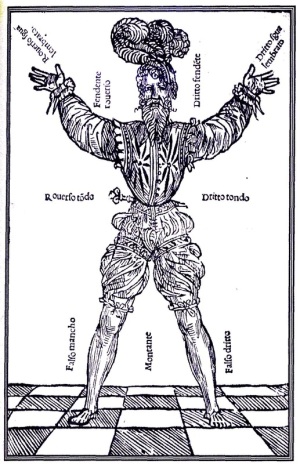By THLady Meala Caimbeul, Caid Cut & Thrust Marshal
Hello again. There was a quite successful Cut & Thrust workshop at Collegium Caidis, and I thought I’d share the drill we worked on. It is fairly simple, but there are many options for adding complexity.
Short description:
Both partners are in a neutral third guard. They are just within measure, sword points crossed, but not much more. The active partner opens the line, inviting a thrust (if not a lunge) up the middle. As the passive partner thrusts, the active one cuts the thrust away, and returns a cut to the passive partner’s head.
Lesson one – the dissuasive cut. By delivering a good cut to the oncoming thrust the Active partner gains more time than if he simply gained the line by positioning, or sliding on the Passive partner’s blade.
Lesson two – the return cut. Try to use the true edge and make the turn as abbreviated as possible. Deliver a good cut that connects with the middle of the blade.
Lesson for the Passive Partner – Good guard and thrust/lunge. Make sure your starting guard is as perfect as is it can be; your weight starts back, hand is extended, and your are pointing at, if not above your opponents head. Deliver the thrust or lunge as if it was your practice; start with your hand, include the body, and only step if you need to.
Advanced lessons
Timing and Distance. Start the drill out of measure and let the Passive partner approach. The Active partner will invite when he feels the Passive partner is at lunging distance and would have to take a step to make contact. If Passive is not close enough the dissuasive cut will fail, if too close the thrust will land or there won’t be space for the return cut.
Keep them honest. Passive partner attempts the second intention as the Active person makes the return cut. If the Active partner does not make a good dissuasive cut, the passive partner can counter-attack. If the Return cut is not delivered from a protected place, there will be a double kill.
This drill can be done on both inside and outside the Active partner’s sword.
Good luck and happy cutting!





